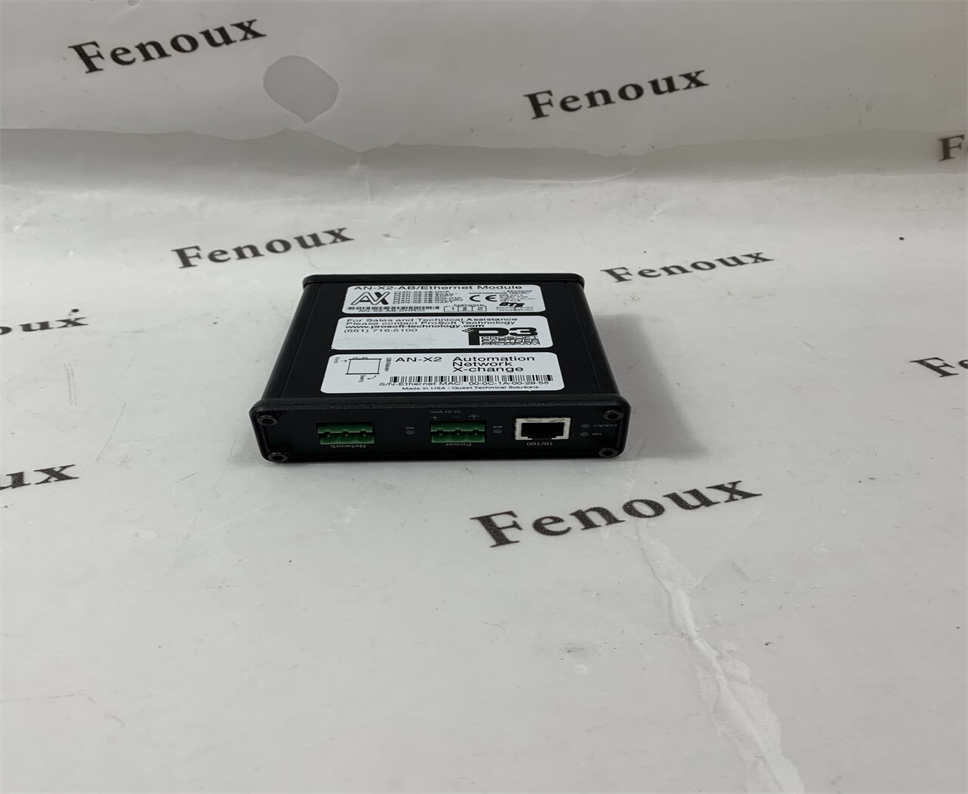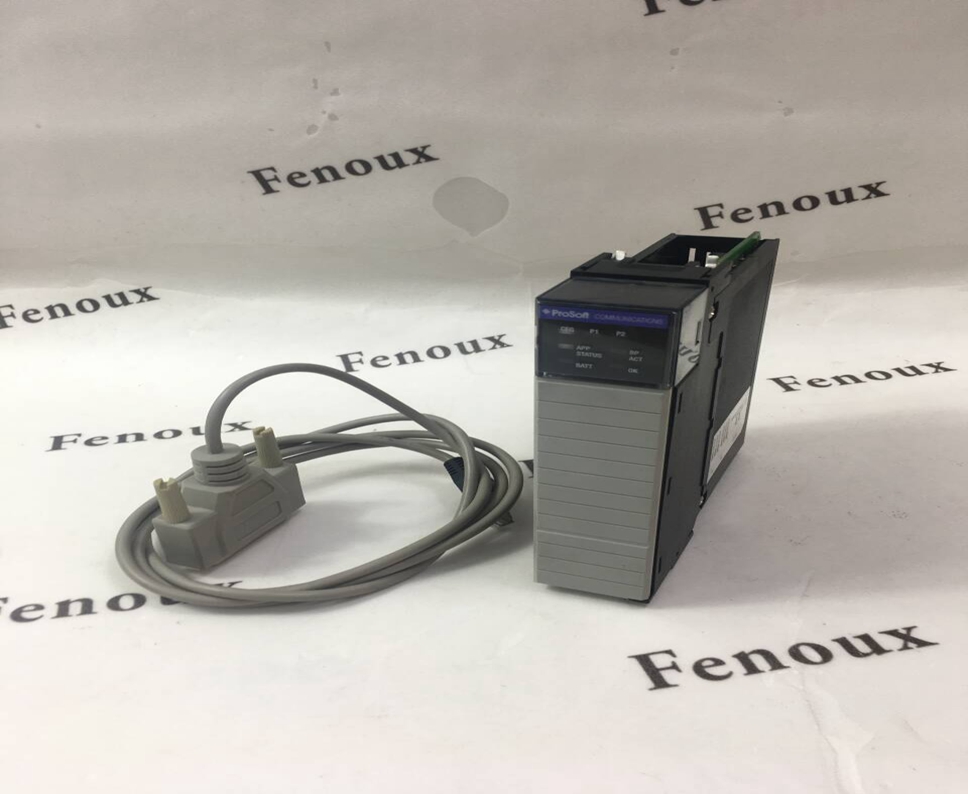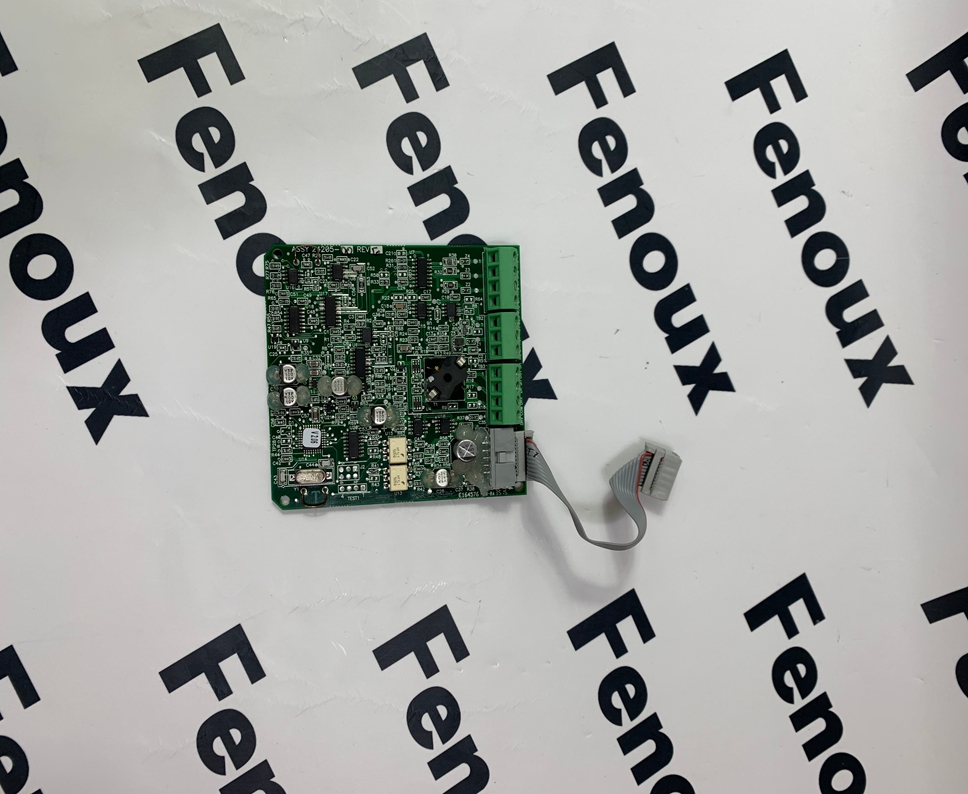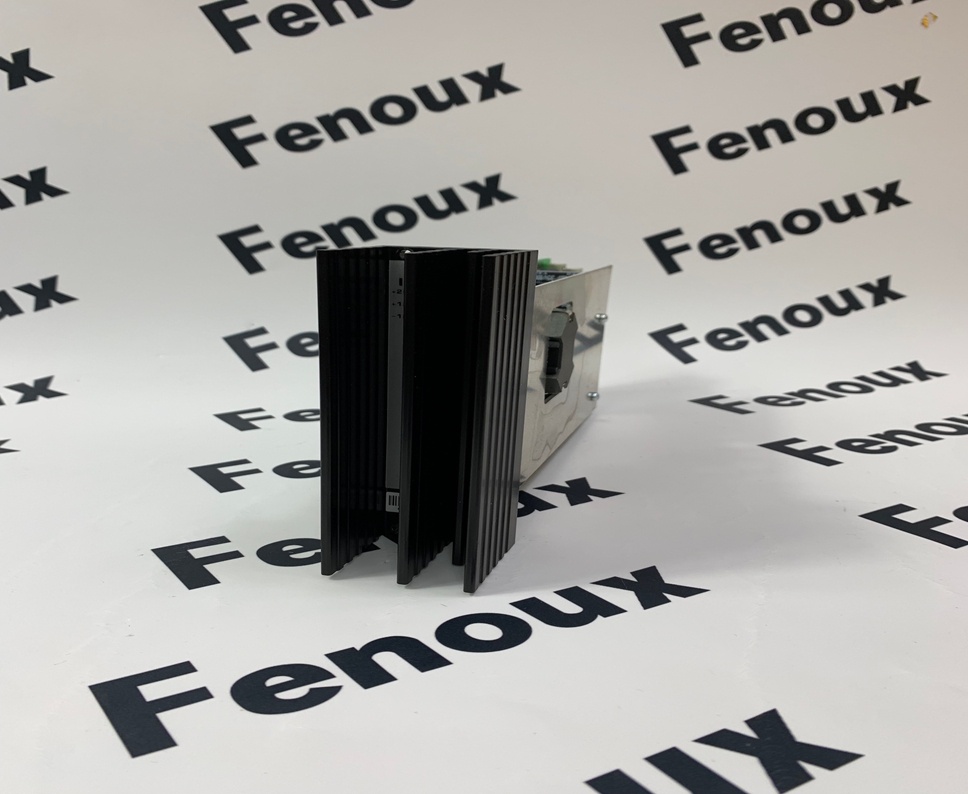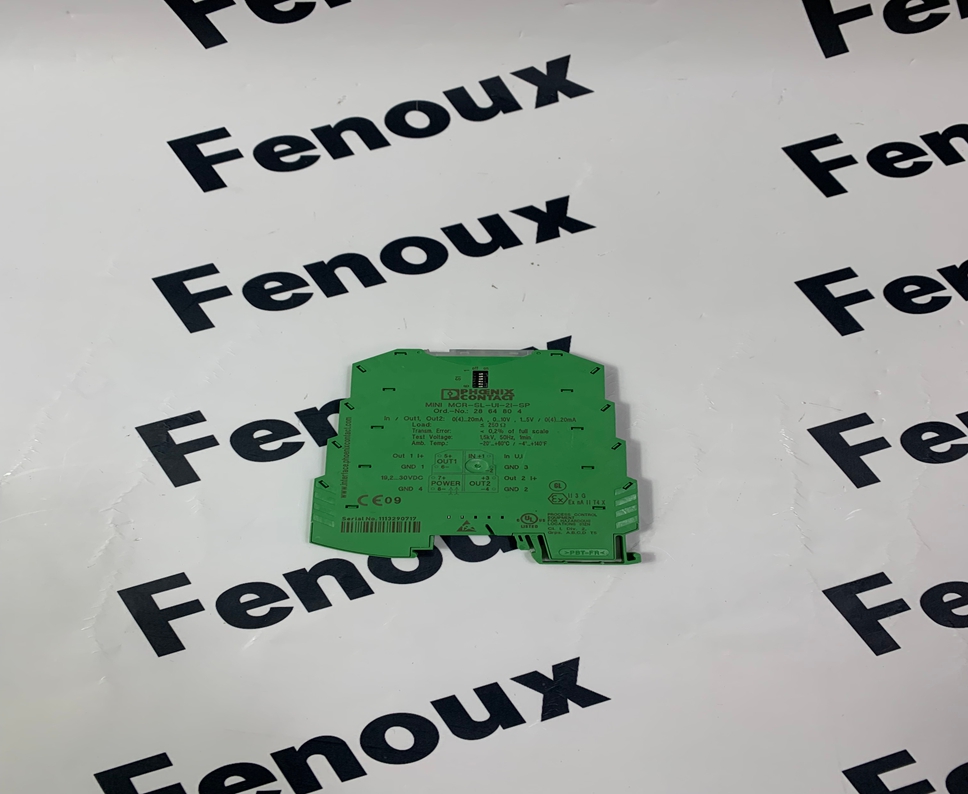PROSOFT MVI56E-MCM Output Point I/O Module
Brand:ProSoft
Model number:MVI56E-MCM
Colour:new
Warranty: 12 months
Lead Time:3-day working day
Country of origin: USA Price: Please contact us
Product weight:0.2kg
Shipping Port: Xiamen, China
Payment: Bank of Chicago, Bank of Singapore
Express cooperation: fedex, DHL, UPS and your express account
Service: Professional Sales provides 24 hours /7 days online service
PROSOFT MVI56E-MCM Output Point I/O Module
ProSoft Modbus Communication Modules Overview
ProSoft Modbus Communication Modules act as powerful communication interfaces, allowing Programmable Logic Controllers (PLCs) or other Programmable Automation Controllers (PACs) to seamlessly exchange data with Modbus-compatible devices. They offload the Modbus communication tasks from the main processor, improving overall system performance and simplifying integration. ProSoft offers modules for both Modbus Serial (RTU/ASCII) and Modbus TCP/IP protocols, often supporting both Master and Slave functionalities.
Product Detailed Description
Functionality:
Protocol Conversion: The primary function is to convert data between the PLC's native backplane communication and the Modbus protocol (Serial or TCP/IP).
Master and/or Slave Operation: Many ProSoft Modbus modules can be configured as a Modbus Master (initiating commands to read/write data from slave devices) or a Modbus Slave (responding to requests from a Modbus Master). Some modules support simultaneous Master and Slave operation on different ports.
Data Exchange: Facilitates bi-directional data transfers, allowing the PLC to read data from Modbus devices (e.g., sensors, power meters, drives) and write data to them (e.g., control setpoints, commands).
Offloading PLC CPU: The module acts as a co-processor, handling the complex Modbus messaging and polling independently, thereby reducing the load on the main PLC CPU's scan time.
Data Mapping: Allows user-defined memory mapping to exchange large amounts of data (often up to 10,000 16-bit registers) between the module's internal memory and the PLC's data tables.
Key Features:
In-Chassis Solutions: A significant portion of ProSoft's Modbus modules are designed to fit directly into the backplane of popular PLCs like Rockwell Automation's ControlLogix, CompactLogix, and SLC 500 platforms. This provides tight integration and ease of use.
Gateways: ProSoft also offers standalone DIN-rail mounted gateways (e.g., PLX series) that convert between Modbus and other protocols, or between Modbus TCP/IP and Modbus Serial for broader connectivity.
Add-on Profiles (AOPs) and Add-on Instructions (AOIs): For Rockwell Automation platforms, ProSoft provides AOPs and AOIs, which significantly reduce commissioning time by integrating the module's configuration and data into the PLC's programming environment (Studio 5000/RSLogix 5000) with logical tag names.
Diagnostic Tools: Built-in diagnostic features, including LED indicators (Module Status, Application Status, Port Status), scrolling alphanumeric displays, and data analyzers, help in troubleshooting communication issues.
Flexible Port Configuration: Modules often come with multiple serial ports (e.g., RS-232, RS-485, RS-422) that can be individually configured for Modbus RTU or ASCII modes, baud rates, parity, data bits, and stop bits.
Ethernet Connectivity: Modbus TCP/IP modules feature Ethernet ports (often 10/100 MB with auto-crossover detection), sometimes with dual ports for DLR (Device Level Ring) topology or as an embedded switch.
Data Types: Support for various data types, including 16-bit registers, and handling of 32-bit floating-point data (e.g., Enron, Daniel-style).
Rugged Design: Built for industrial environments with robust enclosures, wide operating temperature ranges, and resistance to shock and vibration. Some models offer conformal coating for harsh or caustic conditions.
Product Parameters (General, as specific models vary)
Communication Protocol: Modbus TCP/IP Client/Server, Modbus Serial Master/Slave (RTU/ASCII).
PLC Platform Compatibility: Rockwell Automation ControlLogix, CompactLogix, SLC 500, MicroLogix (model dependent). Standalone gateways are platform-independent.
Number of Ports: Typically 1 to 4 serial ports, 1 or 2 Ethernet ports.
Serial Communication Parameters:
Baud Rate: 110 baud to 115.2 kbps (or higher).
Parity: None, Even, Odd.
Data Size: 7 or 8 bits.
Stop Bits: 1 or 2.
RS-485 RTS on/off delay: Programmable.
Error Checking: CRC-16 (RTU), LRC (ASCII).
Ethernet Communication Parameters:
Speed: 10/100 Mbps, Auto-negotiating.
Protocols: Modbus TCP/IP, supports multiple client/server connections.
Data Memory: Up to 5,000 to 10,000 16-bit registers for data exchange.
Commands (Master Mode): Up to 100-250 commands per Master port, each fully configurable.
Power Supply: Typically 24 VDC nominal (range 10-36 VDC or 18-36 VDC, depending on module).
Current Load: Varies by model (e.g., 300 mA to 610 mA @ 24 VDC nominal).
Operating Temperature: Typically -25°C to 70°C (-13°F to 158°F); some XT versions for extreme temperatures (-40°C to 75°C).
Storage Temperature: -40°C to 80°C (-40°F to 176°F) or higher.
Relative Humidity: 5% to 95% RH, non-condensing.
Shock: IEC 60068-2-27; typically 15G @ 11ms (operational), 30G @ 18ms (non-operational).
Vibration: IEC 60068-2-6; typically 5G @ 10 to 150 Hz.
Isolation: Often 2500 Vrms port signal isolation.
Certifications: UL, cUL, CE, Class I Div 2, ATEX (for hazardous locations, specific to models).
Product Advantages
Seamless Integration: Designed for tight integration with Rockwell Automation PLCs, often with native AOPs and AOIs that simplify programming and reduce commissioning time.
Offloads PLC Processing: By handling Modbus communication independently, these modules free up PLC CPU time, allowing the PLC to focus on its core control tasks and improving overall scan time.
High Performance: Capable of high-speed multi-client/multi-server communication, ensuring fast data exchange for demanding applications.
Flexibility: Supports a wide range of Modbus modes (RTU, ASCII, TCP/IP) and physical interfaces (RS-232, RS-485, RS-422), providing versatile connectivity options.
Robustness: Built for harsh industrial environments, ensuring reliable performance and longevity.
Advanced Diagnostics: Comprehensive built-in diagnostics simplify troubleshooting and help identify communication issues quickly, reducing downtime.
Scalability: Supports a large number of Modbus commands and extensive data memory, allowing for communication with numerous devices.
Disaster Recovery: SD card slots on some modules allow for storing configuration files, enabling quick recovery after module replacement.
Global Support: ProSoft Technology offers strong technical support for their products.
Precautions
Model Selection: Carefully select the correct module based on your PLC platform, the type of Modbus communication required (Serial, TCP/IP), the number of devices, and environmental considerations (e.g., extreme temperature versions).
Power Supply: Ensure the module receives a stable power supply within its specified voltage range (e.g., 24 VDC nominal).
Hazardous Locations: If installing in a hazardous location (e.g., Class I, Div 2), ensure the specific module is certified for that environment and strictly follow all installation guidelines, including powering off before wiring or replacing.
Wiring:
Serial: Use proper RS-485 cabling (shielded, twisted pair) with correct termination resistors (120 Ohm) at both ends of the bus to prevent signal reflections and noise. Verify correct pinouts for RS-232/RS-485/RS-422.
Ethernet: Use appropriate industrial Ethernet cables (e.g., CAT5e or CAT6) and ensure proper grounding.
Configuration:
Use ProSoft's specific configuration software (e.g., ProSoft Configuration Builder - PCB) to set up the module's parameters.
Match all Modbus communication parameters (baud rate, parity, data bits, stop bits) between the ProSoft module (master) and the slave devices.
Carefully map Modbus registers to PLC tags, paying close attention to data types (16-bit, 32-bit, floating point, byte/word swaps).
Properly configure polling intervals and timeout delays to optimize network performance and avoid "Slave Device Busy" errors or communication failures.
Grounding: Ensure proper grounding of the module and the communication network to minimize electrical noise and ensure reliable communication.
Firmware: Keep the module's firmware updated to benefit from bug fixes and new features.
Documentation: Always refer to the specific user manual and data sheet for the ProSoft Modbus module you are using for detailed installation, configuration, and troubleshooting information. ProSoft's knowledge base and tech support are excellent resources.
Hot-Swapping: Most ProSoft in-chassis modules are NOT hot-swappable. Always remove power from the rack before inserting or removing the module to prevent damage to the module, processor, or other devices.
Product Applications
ProSoft Modbus Communication Modules are critical components in many industrial automation scenarios, enabling communication between diverse devices and control systems.
SCADA Systems Integration: Connecting various field devices (e.g., RTUs, flow computers, power monitors, intelligent sensors) to a central SCADA system via Modbus.
Motor Control Centers (MCCs): Integrating smart motor control devices, variable frequency drives (VFDs), and motor protection relays that communicate via Modbus into a PLC-based control system.
Power Monitoring: Collecting energy consumption data from power meters, circuit breakers, and other electrical equipment using Modbus TCP/IP or RTU.
Process Control: Connecting process instruments (e.g., pressure transmitters, temperature sensors, flow meters) and control valves that use Modbus to a PLC for automated control.
Building Management Systems (BMS): Integrating HVAC units, lighting controls, and other building equipment that support Modbus.
Oil & Gas: Communication with wellhead RTUs, pump jacks, and pipeline monitoring devices.
Water & Wastewater Treatment: Controlling pumps, valves, and monitoring instruments in treatment plants.
Packaging Machinery: Integrating third-party devices or sub-systems that communicate via Modbus.
Factory Automation: Bridging communication between legacy Modbus devices and modern control platforms, or enabling communication between different PLCs/PACs using Modbus as a common protocol.
Foreign Device Data Concentrator: Aggregating data from multiple Modbus slave devices into a single point for access by a master controller.
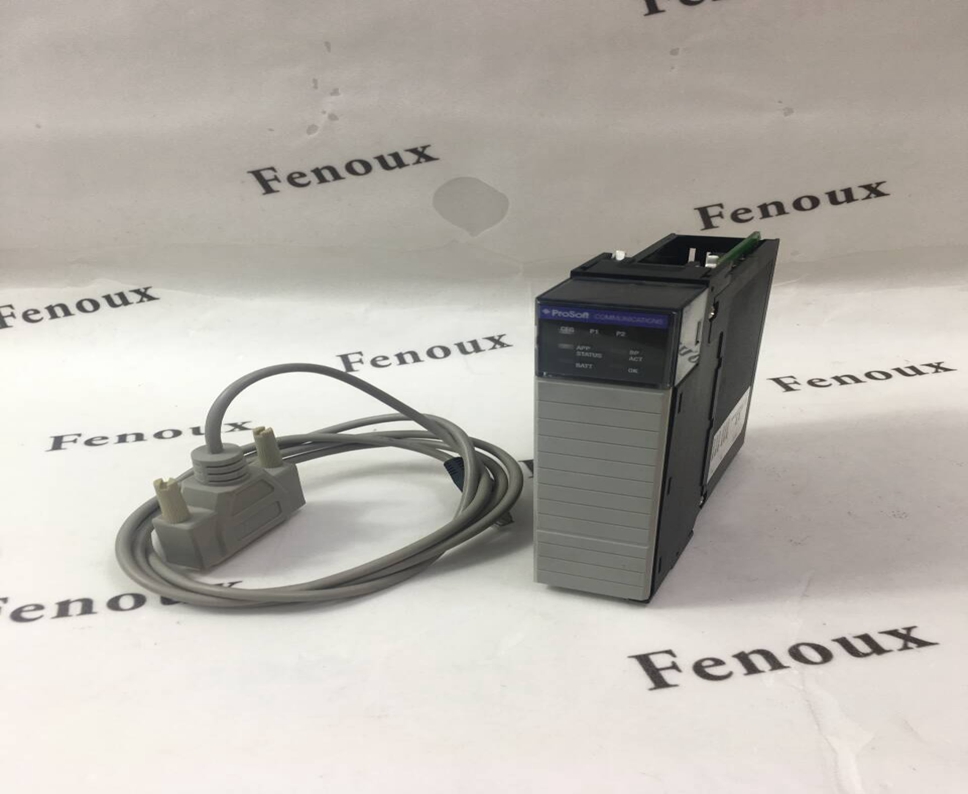
Shipping Port: China
Payment: Bank of Chicago, Bank of Singapore
Express cooperation: fedex, DHL, UPS and your express account
Service: Professional Sales provides 24 hours /7 days online service
Related products:
| PROSOFT | HFBR-1505AZ | PROSOFT | MVI71-DNP |
| PROSOFT | PMF1216D61 | PROSOFT | MVI56-PDPS |
| PROSOFT | PMF1327205 | PROSOFT | MVI56-PDPMV1 |
| PROSOFT | 1454-9F | PROSOFT | MVI56-MNETC |
| PROSOFT | MVI56-MCM | PROSOFT | MVI56-MBP |
| PROSOFT | MVI56E-MCMR | PROSOFT | MVI56E-MNET |
| PROSOFT | PTQ-PDPMV1 | PROSOFT | MVI56E-MCM |
| PROSOFT | MVI56-MCMR | PROSOFT | MVI56E-GSC |
| PROSOFT | PLX31-MBTCP-MBS4 | PROSOFT | MVI56-AFC |
| PROSOFT | MVI56-PDPMV1 | PROSOFT | MVI46-MCM |
| PROSOFT | PS69-DPM | PROSOFT | MVI46-DFNT |
| PROSOFT | 5304-MBP-PDPMV1 | PROSOFT | MCI46-MCM |
| PROSOFT | MVI56-MCMR | PROSOFT | ILX56-MM |
| PROSOFT | MVI56-PDPMV1 | PROSOFT | MVI56-GSC |
| PROSOFT | MVI56E-MNET | PROSOFT | MVI56-DFCM |
| PROSOFT | PTQ-PDPMV1 | PROSOFT | MVI46-GEC |
| PROSOFT | 3150-MCM | PROSOFT | 5204-MNET-PDPMV1 |
| PROSOFT | 5601-RIO-MCM | PROSOFT | SST-PB3-CLX |
| PROSOFT | PROSOFT | PROSOFT | MVI56-GSC |
| PROSOFT | 1454-9F | PROSOFT | 5601-RIO-MCM |
E-mail: alex@fenoux.com
Tel.: +86 13338369201
Skype: +86 13338369201
WhatsApp: +86 13338369201


